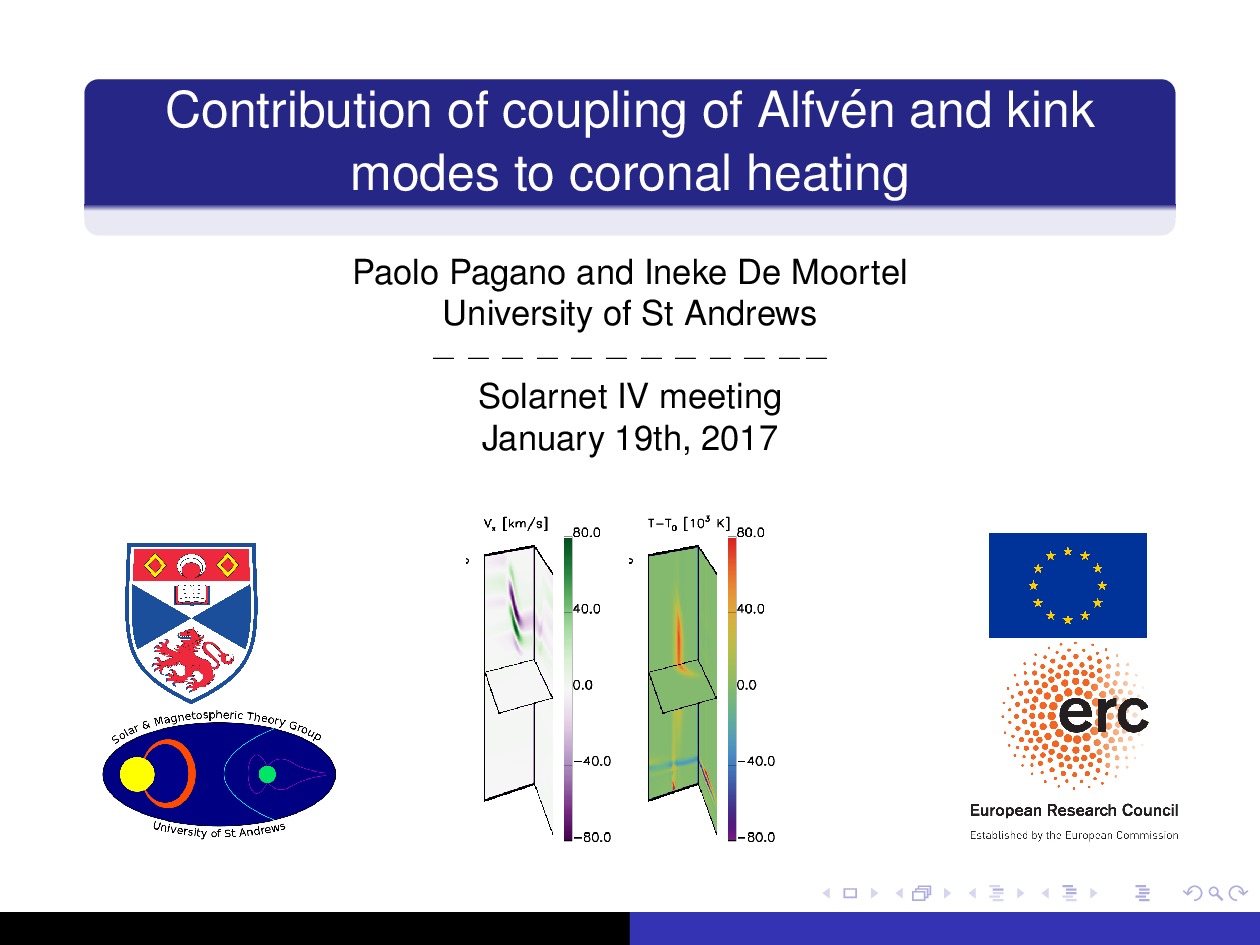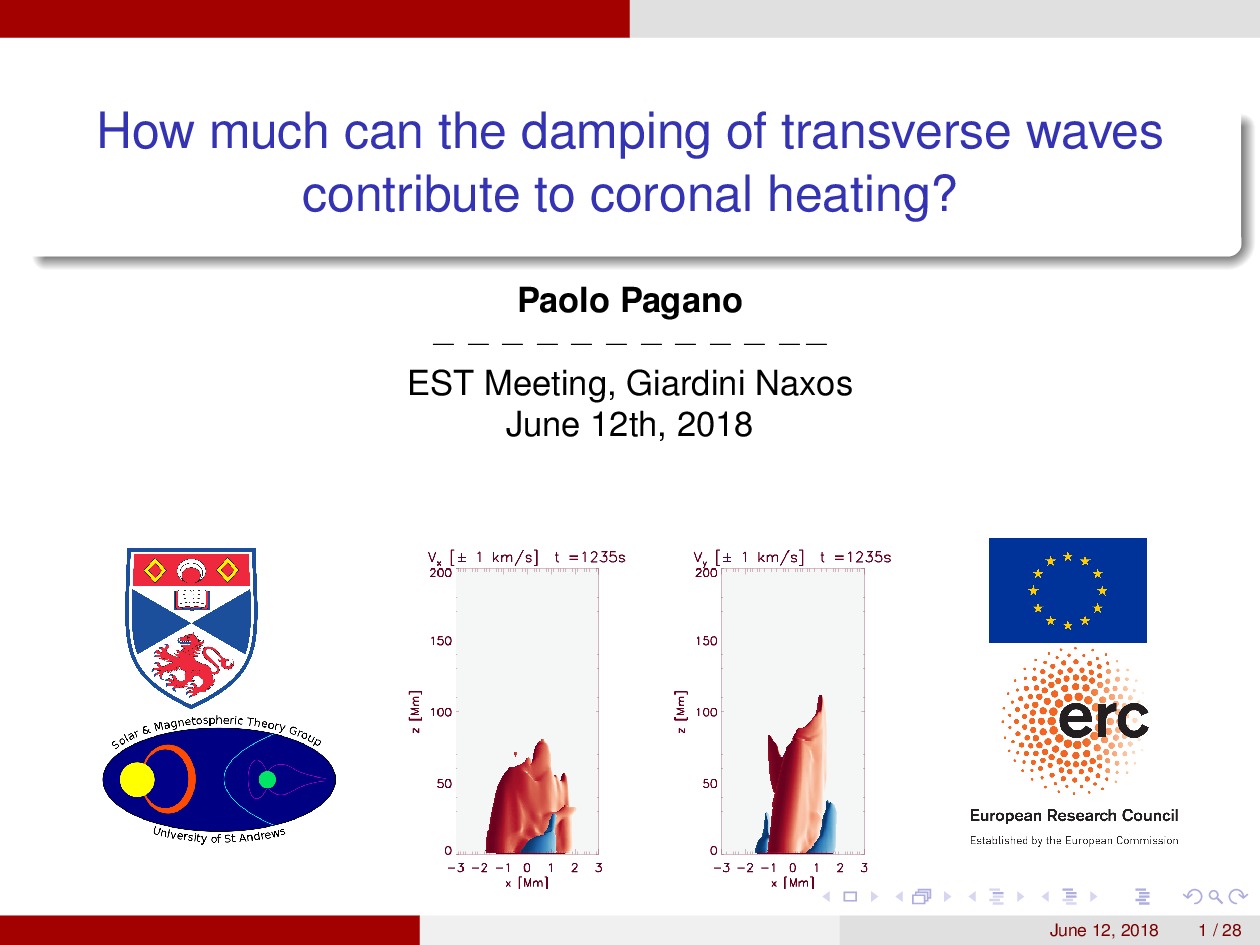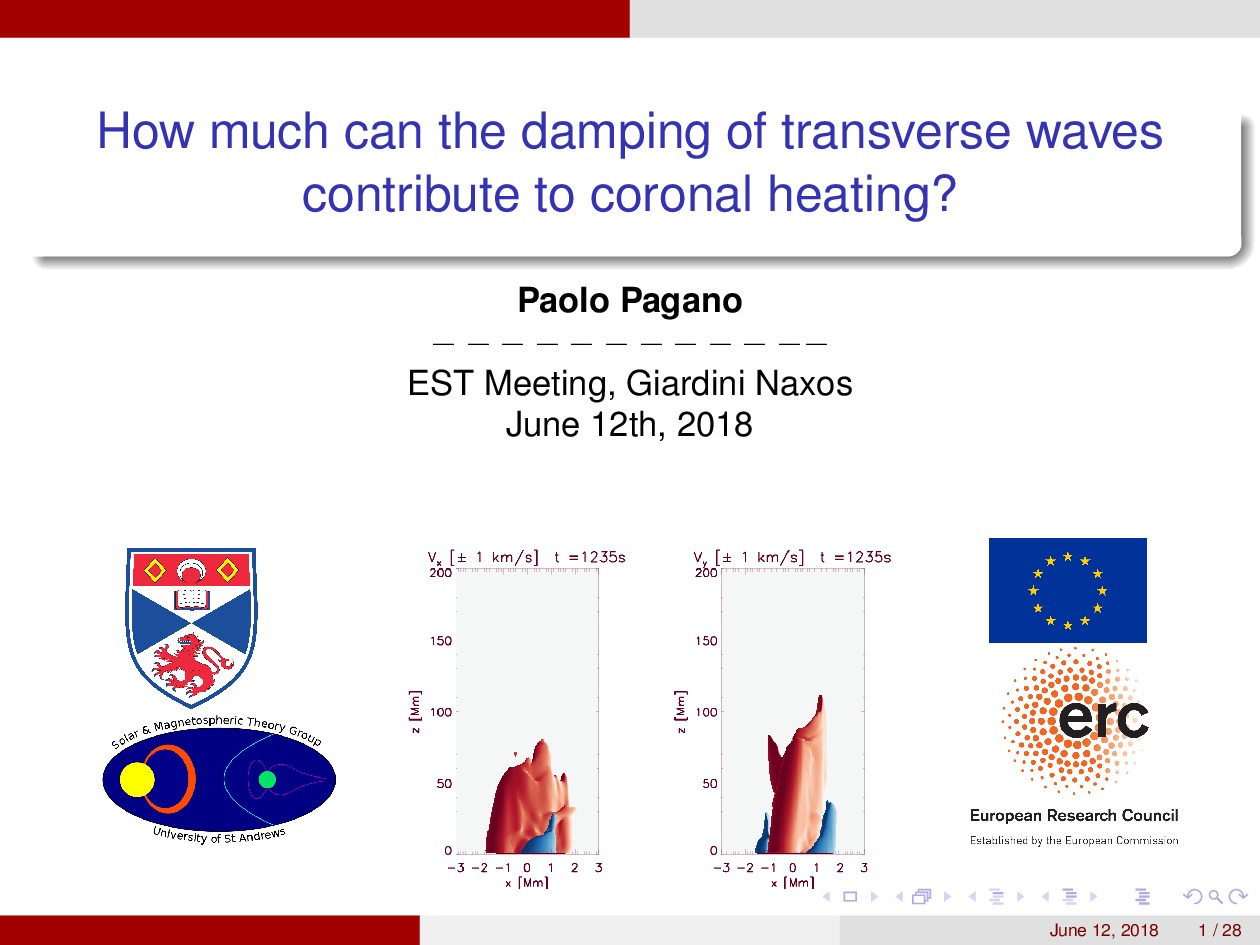Date of upload:
20.06.2018
Co-author:
Ineke De Moortel
Abstract:
Observations of coronal loops have long revealed ubiquitous, transverse velocity perturbations, that undergo strong damping as they propagate. Observational estimates show that these perturbations contain significant amounts of energy and a clear power spectrum for these transverse oscillations has been identified, composed of three distinct distributions: one for long periods, one for near 5 minutes oscillations and one for short periods.
We have previously demonstrated that the damping of transverse waves can be understood in terms of coupling of the transversal modes (kink) with azimuthal modes (Alfveìn) in the inhomogeneous boundaries of the loops. Moreoever this process strongly depends on the wavelength of the kink modes, where short wavelength oscillations are more efficiently damped, but carry less energy.
However observed wave damping does not automatically imply dissipation and hence heating.
To investigate under which circumstances this process can contribute to coronal heating and to what extent the heating rate is sustainable, we perform 3D numerical experiments modelling the observed power spectrum of transverse oscillations including the effects of resistivity and thermal conduction.
By means of this simulation, we can address to what extent the observed power spectrum of transverse oscillations can contribute to coronal heating and how the simultaneous propagation of long and short period wavelengths affects the heat deposition distribution.
In addition, we will address what high resolution instruments can reveal about this mechanism if the structure of the heating deposition is resolved and how to extend the modelling of this mechanism from isolated loops to complex loop systems as observed in active regions.


